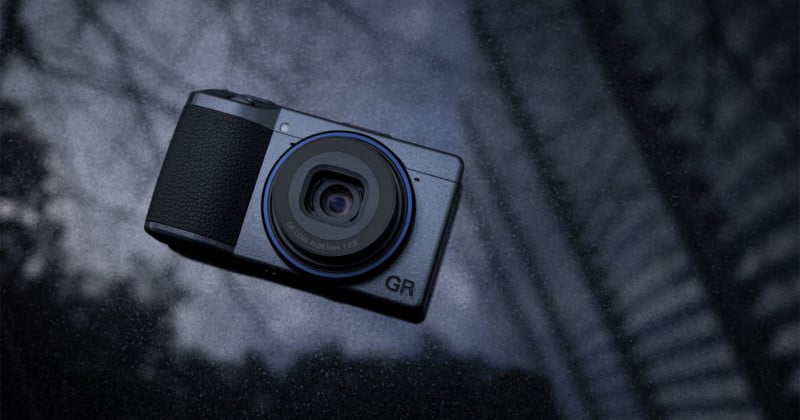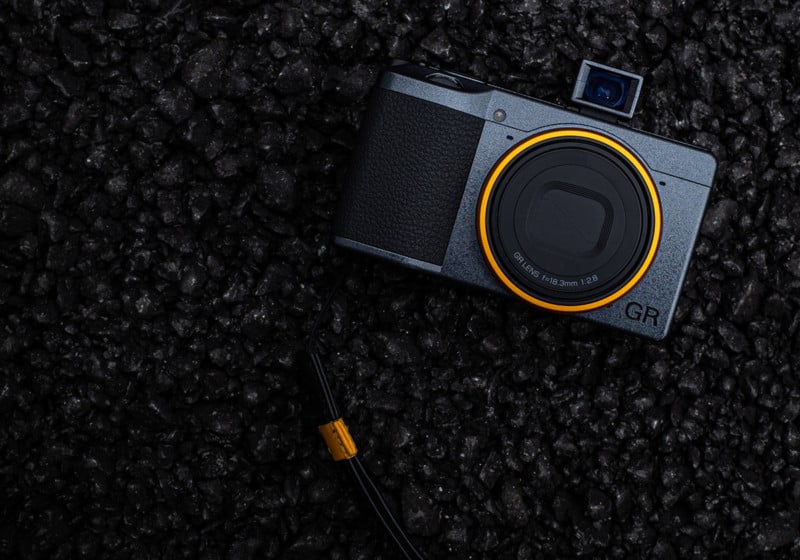![]()
While Fujifilm’s runaway popularity of the newly launched X100VI is well known, it isn’t the only company that is “suffering from success.” Ricoh’s GR III, which is now over five years old, continues to be in such high demand it is difficult, if not impossible, to acquire.
The demand is so overwhelming that last week, Ricoh announced it would no longer be accepting new orders for the GR III, GR IIIx, GR III Diary Edition, and GR IIIx Urban Edition cameras.
“The Ricoh GR series of high-end compact digital cameras has been well received by a large number of customers, and we have received orders that far exceed our plans. Currently, we are increasing production in order to deliver products as soon as possible, but [we are] unable to keep up with production, and customers who have already placed orders are also waiting for delivery,” Ricoh says, translated from Japanese.
At the time of publication, all GR III models — of which there are many — are listed as either out of stock or back-ordered from both B&H Photo and Adorama, so the shortage problem isn’t just one local to Japan. The company is unable to provide a timeline for when it will be able to resume taking new orders.
“Therefore, we regret to inform you that we will temporarily stop accepting orders for the Ricoh GR series from today. We deeply apologize for the inconvenience caused to our customers. We will resume accepting orders when a stable supply can be expected. We will notify you again on our website regarding when orders will resume.”

As PetaPixel has reported before, these kinds of statements are not unusual, as Japanese companies are required to publicly announce any interruptions to product availability. That said, outright stopping new orders is far less common than simply stating that it may take longer to deliver on orders, which is what Fujifilm recently had to do with the X100VI.
Ricoh was rumored to be overwhelmed by demand for the GR III last summer to the degree that orders were taking months to fulfill. The company didn’t issue any public notice back then, however. It appears that it could not longer put off doing so.

While frustrating for those who want to purchase either of these new cameras, this level of sustained high demand does show that photographers still want compact cameras, despite what most camera companies have believed for the last several years.
With the growth of capability in smartphone camera technology, just about every camera company completely divested from developing compact cameras since the market appeared to no longer want them; that is, at least, what the balance sheets showed. But there is more to it than that. Prior to the smartphone, Circuit City, Best Buy, CompUSA, and every other electronics store were filled to the brim with cheap, low-quality compact cameras. There is a bit of nuance there that most of these manufacturers missed: it’s not that photographers didn’t want compact cameras, but rather they no longer wanted bad compact cameras.
Hopefully that is more clear now.
There is enough room in this segment to support more players. Wouldn’t it be nice to see a compact film camera-inspired option from Canon, Nikon, or Sony (leveraging that Minolta heritage)? OM System could use it as an opportunity to relaunch its popular Pen series in the United States. Every camera maker has the opportunity to have their Fujifilm X100VI moment, they just have to play their cards right.
Most importantly though, manufacturers just have to remember that this segment is about fun and fostering creativity first and foremost. The proof is there, though: make a high-quality, premium compact camera, and photographers will buy it.
Image credits: Header image left courtesy of Ricoh, right courtesy of Fujifilm
